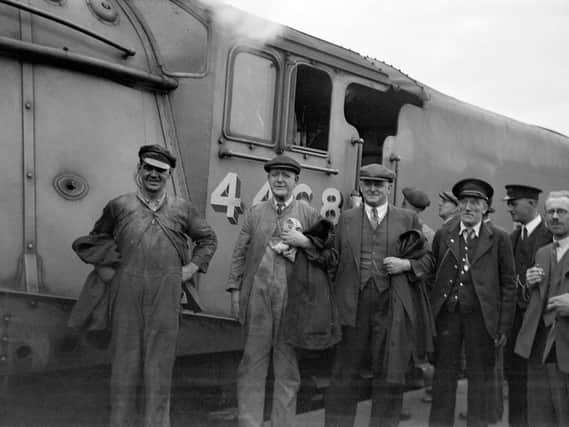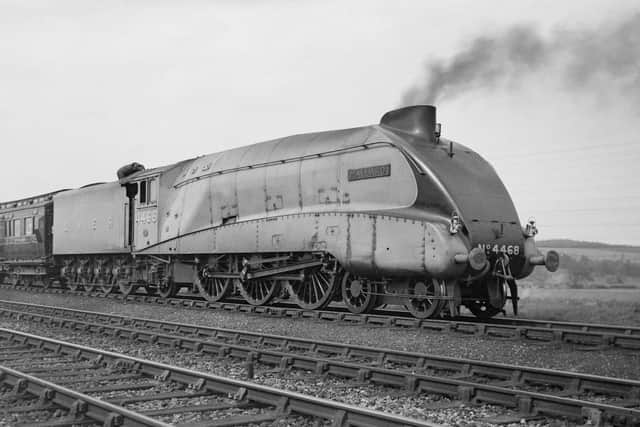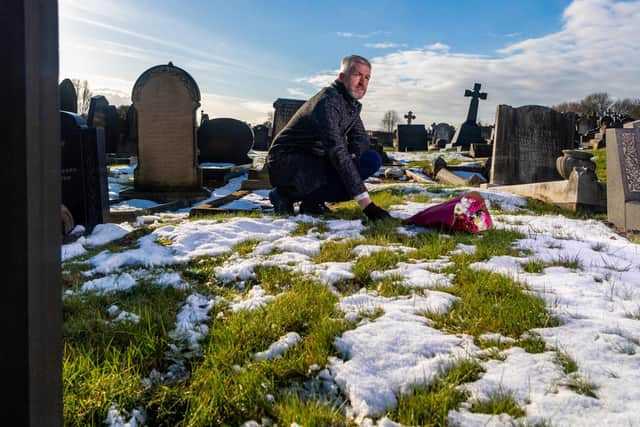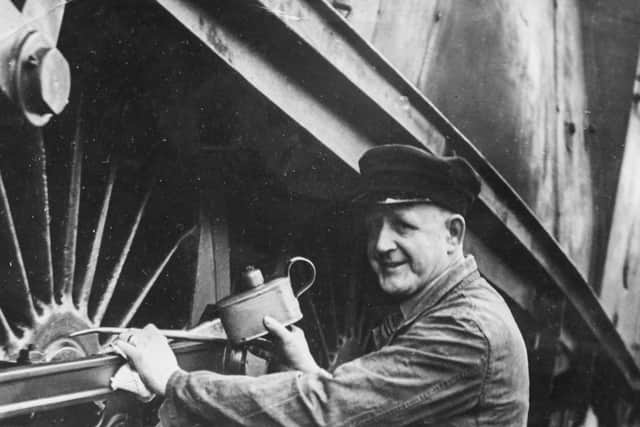Campaign to honour Joe Duddington - Mallard’s driver when it set a new steam locomotive world speed record


Here are all the facilities that you would wish to find – plus a few that might be rather unexpected. There’s always a long line for those who wish to enjoy an encounter with Harry Potter adjacent to platform 9¾ (photo opportunities and a lot of retail therapy).
Many busy commuters and travellers, though, will walk past the beautifully-crafted statue (by sculptor Hazel Reeves) to a true railway pioneer without a second glance.
Advertisement
Hide AdAdvertisement
Hide AdThe statue of Sir Nigel Gresley was unveiled five years ago. Gresley was an engineer par excellence, an innovator and inventor. If there was a problem on the rail tracks, he solved it.


Many of Gresley’s designs and ideas were thought through – and then built – in Doncaster, at the famous plant works, adjacent to the main line station.
The most famous was Mallard, which gloriously broke the record for the fastest steam locomotive in 1938. It rocketed from King’s Cross to Edinburgh, and over one stretch, hit an astonishing 126mph. That record still stands today.
The town honoured him in 2012 by naming the redeveloped area in front of the new civic quarter and Cast theatre Sir Nigel Gresley Square, and the ceremony was attended by his two grandsons. Gresley also has a commemorative plaque at Waverley Station in Edinburgh, and another in the city itself.
Advertisement
Hide AdAdvertisement
Hide AdThere’s a huge sign alongside the track on the East Coast main line, just south of milepost 90¼ (on the “up” side) which reads “Mallard 126mph July 3, 1938” and is seen by rail passengers every day. A plaque has also been put up at Hadley Wood station, near Gresley’s former north London home.


There’s even a Gresley Society, which celebrates his memory – he died in 1941 aged 64 – as well as a pub named after him in Derbyshire, near where he was brought up, and two called the Mallard in Doncaster.
Mallard (officially “LNER 4468 Class A 4-6-2 steam locomotive”) is today housed in the National Railway Museum in York. She is 70 feet long, weighs 165 long tons (including her tender), and painted in LNER “garter blue”. She left active service in 1963, and ever since her debut in the late Thirties she has been venerated by rail enthusiasts.
However, while Gresley is rightly remembered for his achievements, if you mentioned the name Joe Duddington to most people you would be met with blank looks. But there’s a group in Doncaster which has just changed all that.
Advertisement
Hide AdAdvertisement
Hide AdJoe Duddington was the driver on the footplate of Mallard when she broke that speed record, and, while Nigel Gresley and the directors of the (then) LNER were probably celebrating the momentous event with a slap-up meal and a few glasses of Champagne, Joe and his fireman Thomas Bray (who was later to become a driver in his own right) more than likely wiped their brows, cleaned the grease from their hands, and had a couple of well-deserved pints in the nearest pub.


Gresley had specified quite clearly that it was to be Duddington and Bray on the footplate, and no-one else.
The day after the record was established, Duddington and Bray drove another train up from King’s Cross and were met on the platform at Doncaster by some colleagues who gave them a round of applause.
Joe was asked how he felt about his efforts and, with masterly understatement, said that it had been “a grand run, and the engine behaved beautifully. There was no swaying, and cups of tea that were laid out in one of the coaches were not spilt over, which shows how steadily she ran. I have been driving since 1911, and three years ago I set up another record, for the Scarborough Flier. Mr Bray and I have been together on the King’s Cross run for about three months.”
Advertisement
Hide AdAdvertisement
Hide AdJoe may well have been a hero to schoolboys at the time, but he saw himself simply as a railwayman with a job to do. This he did until he retired in 1944. He had lived in Doncaster all his life, in the Hyde Park area – just a short walking distance to the station – and then in Dunscroft, where he opened a popular fish and chip shop. He was twice married, firstly to Mary Alice, who died tragically young, and then, in 1935, to Florence Goodlad.
When Joe died in 1953 at the age of 76 there was no money to pay for any permanent grave marker, so this record breaker was buried in an unmarked plot in Doncaster’s Hyde Park Cemetery.
But now, nearly 70 years after his death, this is going to change. Just a few weeks ago a cemetery friends group launched an appeal to raise funds for a proper memorial and permanent recognition of Joe’s life and achievements. Within days, and to everyone’s delight, the appeal hit the £5,000 mark, which means that Joe will get his headstone, decorative stonework and a memorial plaque.
Covid restrictions permitting, it will be unveiled on July 3, the day the world-beating record was set. The restored grave will also be included on tours of the cemetery and Joe will also have his own tribute in Doncaster’s new museum, due to open this year.
Advertisement
Hide AdAdvertisement
Hide AdHis great-grandson Matthew Delaney says the family are indebted to the campaigners. “We are astonished – and hugely moved – by the generosity of the town, the railway community, and also the fans of the band Big Big Train, who mention Joe in their song East Coast Racer. It has been a phenomenal effort and it shows that so many people are so proud of him and his achievements.
“Mallard has been part of our family for as long as I can remember, and even mentioning that name brings tears to my eyes, it is that strong a bond. It has always puzzled me that my great-grandfather wasn’t remembered, because to a generation of lads at the time that he broke the record, he would have been the sort of hero that an astronaut is today.”
Not that space exploration is likely to have appealed. “Apparently he really wasn’t that keen on any other machine than his beloved railway engines. He always resisted learning to drive a car and he believed that most people on the road hadn’t got a clue about how to drive – or knew where they were going.”
Matthew, who was born and bred in Doncaster, has stood on the footplate of Mallard in the past at celebrations and anniversaries. “In their time my mother stood there and also my grandmother, but the best thing of all is to be able to sit in the very seat that Joe did. Whenever I do that I get a shiver down my spine. I get very sentimental when I think about his achievements.”
Advertisement
Hide AdAdvertisement
Hide AdMatthew has also met some of Gresley’s and Bray’s descendants. “It’s like being with long-lost relatives when we get together. I don’t know how it happened, but over the decades we had completely lost any evidence of where Joseph was interred, and for the ‘friends’, out of the blue, to locate him and to initiate the fundraiser, well, I cannot tell you how deeply grateful we all are.”
And as for his lauded relative? “There was no vanity to Joseph, nothing boastful. He just did his job and got on with it. I like to think of him going home after that epic run, greeting my great-grandmother, and saying ‘Good day today, lass. Broke a record on the way up. Now then, what’s for tea?”
For further information go to www.fohpc.org.uk